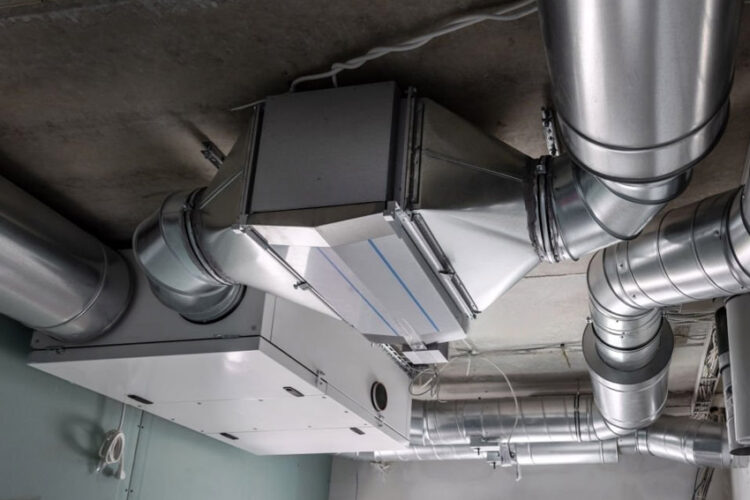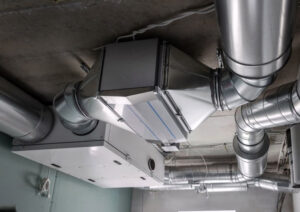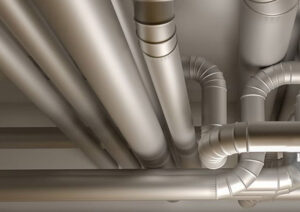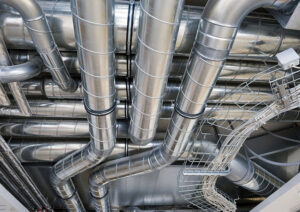
Ducting
Metal ducting refers to HVAC ductwork that is primarily constructed using various types of metal, such as galvanized steel, aluminum, or stainless steel. Metal ducts are widely used in both residential and commercial HVAC systems due to their durability, fire resistance, and ability to handle high-pressure airflow.
Here are some key characteristics and advantages of metal ducting:
- Material Options: The most common metals used for HVAC ductwork are galvanized steel and aluminum. Galvanized steel is coated with zinc to resist corrosion, making it suitable for various environments. Aluminum is lightweight and naturally corrosion-resistant, making it an excellent choice for outdoor installations or areas with high humidity.
- Sturdiness: Metal ducts are rigid and maintain their shape, even under high pressure or temperature changes. This rigidity allows for proper airflow and minimizes the risk of duct collapse or damage.
- Fire Resistance: Metal ducts are fire-resistant, which is crucial for maintaining the integrity of the HVAC system and preventing the spread of fire through the ductwork.
- High Temperature Resistance: Metal ducting can handle high-temperature airflows, making it suitable for both heating and cooling applications.
- Longevity: Metal ducts are durable and have a longer lifespan compared to some other types of duct materials. With proper maintenance, they can last for many years.
- Customization: Metal ducts can be fabricated in various shapes and sizes, allowing for customization to fit specific building layouts and HVAC system requirements.
- Hygiene: Metal ducts are easy to clean and maintain, reducing the risk of dust buildup and potential indoor air quality issues.
- Energy Efficiency: Well-designed and properly sealed metal ducts help maintain consistent airflow, which contributes to better HVAC system efficiency and energy savings.
Regular maintenance of HVAC ducting is essential to ensure its efficiency and prevent issues such as air leaks, contamination, and reduced airflow. Regular cleaning and inspections can help maintain good indoor air quality and extend the lifespan of the HVAC system.


